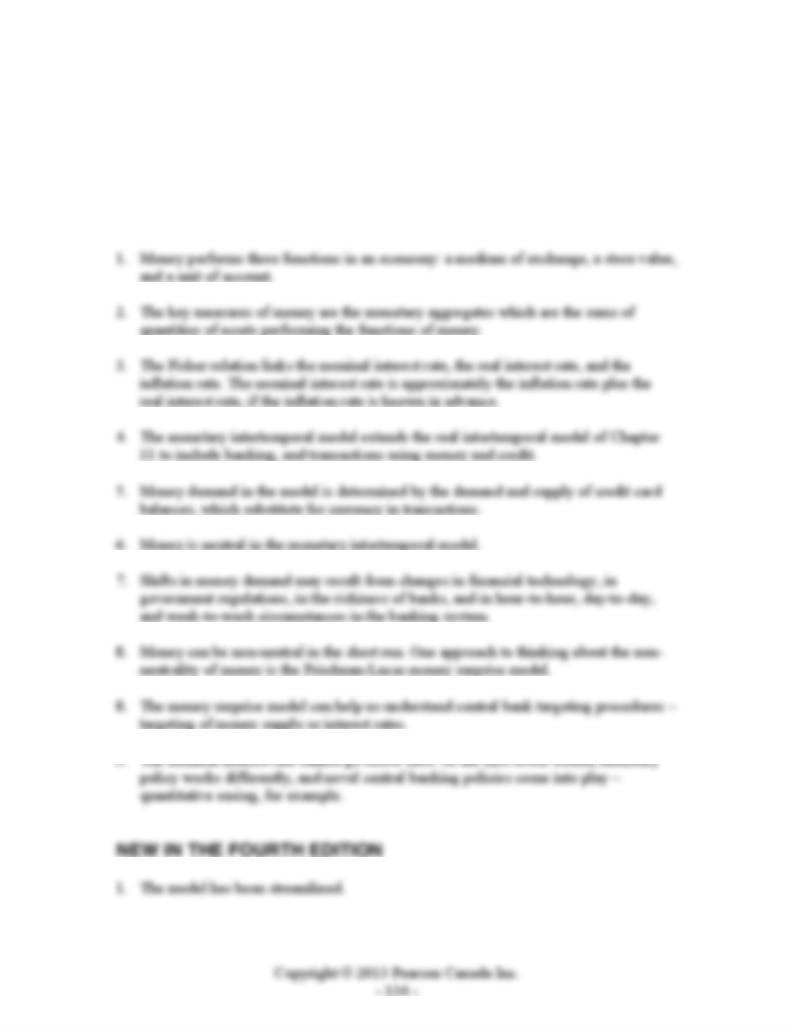
CHAPTER 12
A Monetary Intertemporal Model: Money, Banking,
Prices, and Monetary Policy
KEY IDEAS IN THIS CHAPTER
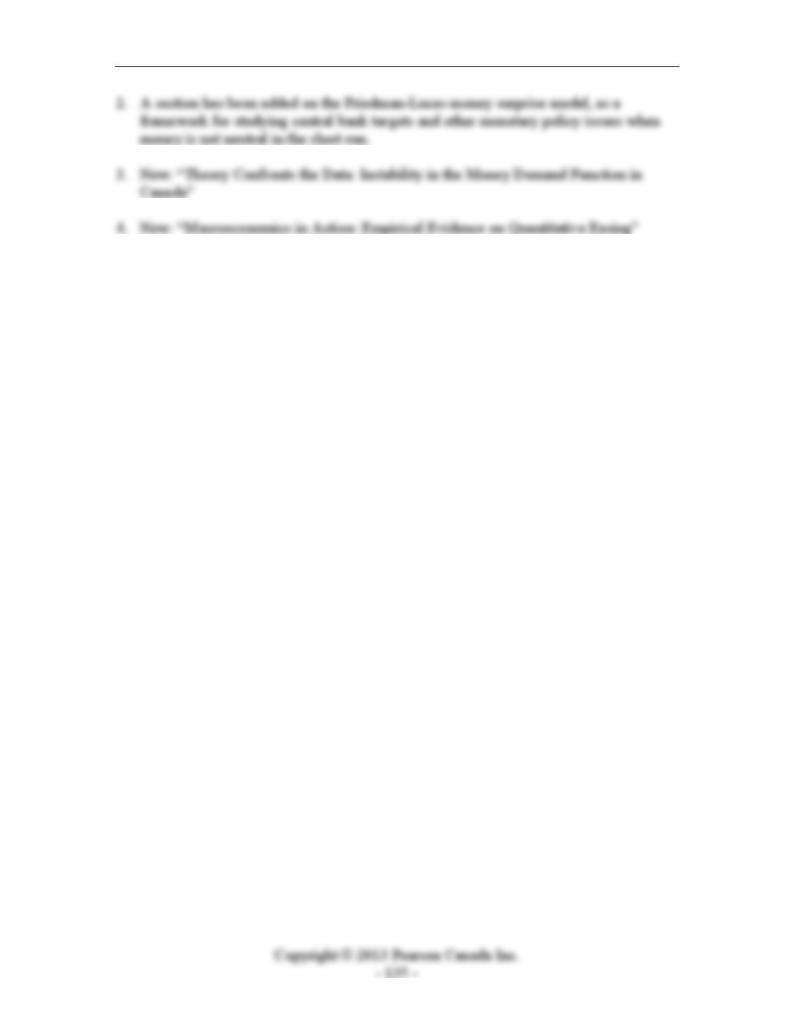
Chapter 12: A Monetary Intertemporal Model
5. All data and graphs have been updated.
TEACHING GOALS
Students should obtain a basic understanding of the role of money in the economy and the
frictions that monetary exchange helps to overcome. The first part of the chapter deals
with traditional roles of money as a unit of account, medium of exchange, and store of
value. Then there is an analysis of the relationship among real and nominal interest rates
and the inflation rate. Students should understand basic Fisherian principles.
This chapter takes a modern approach to money demand. This is different from
traditional Tobin-Baumol approaches to deriving the money demand function, which do
not make much sense given modern transactions technologies. The model includes a
banking sector which provides transactions services that serve as an alternative to
currency. Then, the demand for money is derived from the underlying demand and supply
for “credit card balances” which are a stand-in for all alternatives to currency, including
debit cards, credit cards, and cheques. Ultimately, the demand for money is increasing in
income and decreasing in the nominal interest rate, just as with traditional approaches,
but the student gains more insight into where this relationship comes from, and why it is
not like the demand for a good or service.
An important concept is the neutrality of money, which all economists accept as a long-
run proposition. Students need to understand the importance of shifts in money demand,
and their role in determining central bank policy. The Friedman-Lucas money surprise
model is used as an example of money non-neutrality, though most of the ideas translate
into other models in which money is not neutral. There are some key ideas here relating
to money targeting, interest rate targeting, other approaches to monetary control, and
monetary policy at the zero lower bound.
CLASSROOM DISCUSSION TOPICS
Payments technology has continually advanced over time, but the rate of advance has
accelerated in the era of computer technology. Ask students for examples of advances in
this technology beyond the routine use of cash and the writing of paper cheques. Some
obvious possibilities include the use of ATMs, computer and telephone banking, the use

Instructor’s Manual for Macroeconomics, Fourth Canadian Edition
of pre-paid phone cards, and other forms of smart card technology. Students are also
likely to discuss the existence of credit cards and the ever more sophisticated ways to use
credit cards and protect against fraud. As one example, there is the use of credit cards to
pay for purchases over the Internet. In discussing these possibilities, it is also important to
distinguish payments technology from the proper measurement of the money supply. For
example, it is important to distinguish between payment arrangements that are uses of
credit, like the use of credit cards, from uses of money, like cash and transaction deposits.
In understanding the economy’s transactions demand for money, it might help students to
think of their own demand for money. Most of us carry money. How do you determine
how much to carry with you and how much to invest or save?
The amount of money an individual carries depends on daily expenses, income, the
probability of extra expenses, and the difficulty of obtaining extra money when needed.
The college student who lives in a campus residence and whose meals in the residence
dining room are part of his room payment has few daily cash expenses. The woman who
sits next to him in class may commute to campus and buy her lunch at the local
hamburger heaven. She generally will carry more cash so she can pay for her gasoline
and hamburger. Students who are on a tight budget are likely to carry only what they can
afford to spend. Those who often join their friends for a snack after class or who need to
pick up family groceries on the way home from class need more money than those who
don’t. If you use credit cards and most of the places you frequent take them, you will
need less money than if you must pay cash everywhere you go.
What happens if you do not have enough money or money substitutes such as credit cards
with you? You forego purchases or you go to acquire money. The former reduces sales in
the economy at least temporarily. The latter causes you additional trouble and difficulty,
whether it is necessary to borrow from your companions or to find a bank or ATM
machine that will allow you to obtain means to pay for the goods or services you want. If
sources of additional cash are easily accessible, one is less likely to carry a reserve.
Discussions of Bank of Canada can be useful. Get students to think about the problems
that the Bank of Canada faces. What are its goals? Do those goals make sense? What
special problems did the financial crisis present, both in Canada and in other countries?
2. Measuring the Money Supply
a) The Monetary Base
i) Currency Outside of the Bank of Canada
ii) Deposits of Financial Institutions with the Bank of Canada
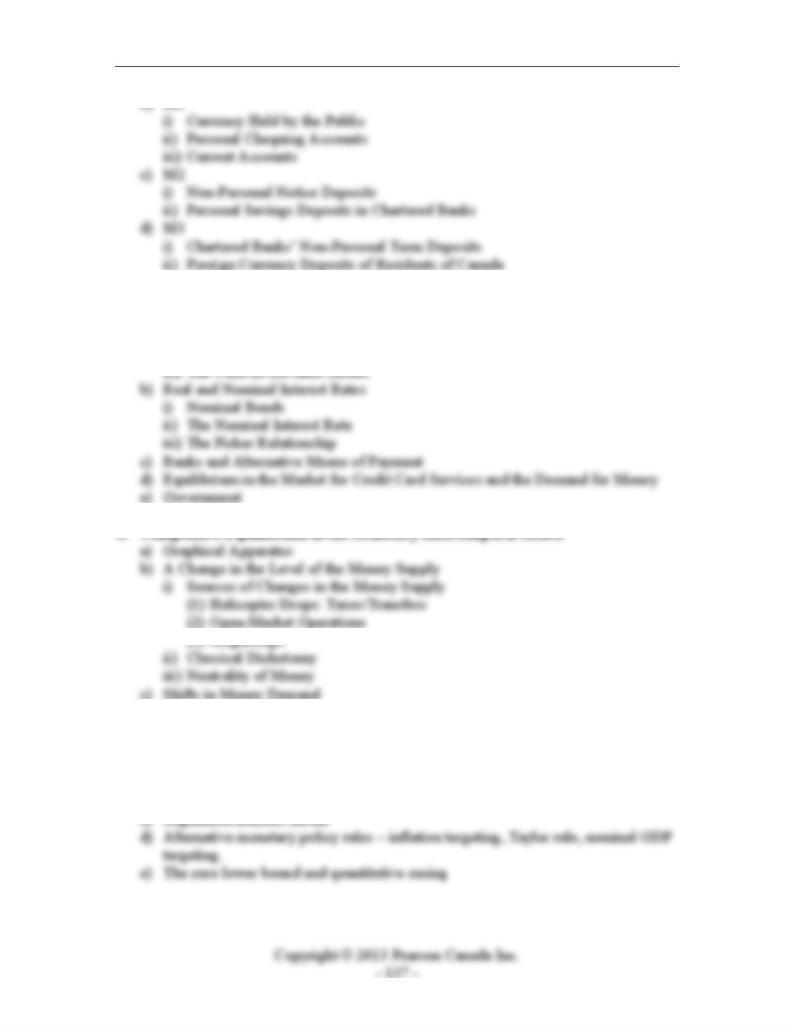
Chapter 12: A Monetary Intertemporal Model
3. Introduction to the Monetary Intertemporal Model
a) The Need for Money
i) Single Coincidence of Wants
ii) Double Coincidence of Wants
5. The Short-Run Nonneutrality of Money: Friedman-Lucas Money Surprise
Model
a) Basic model and nonneutrality of money
b) Implications for monetary policy: money supply and interest rate targeting
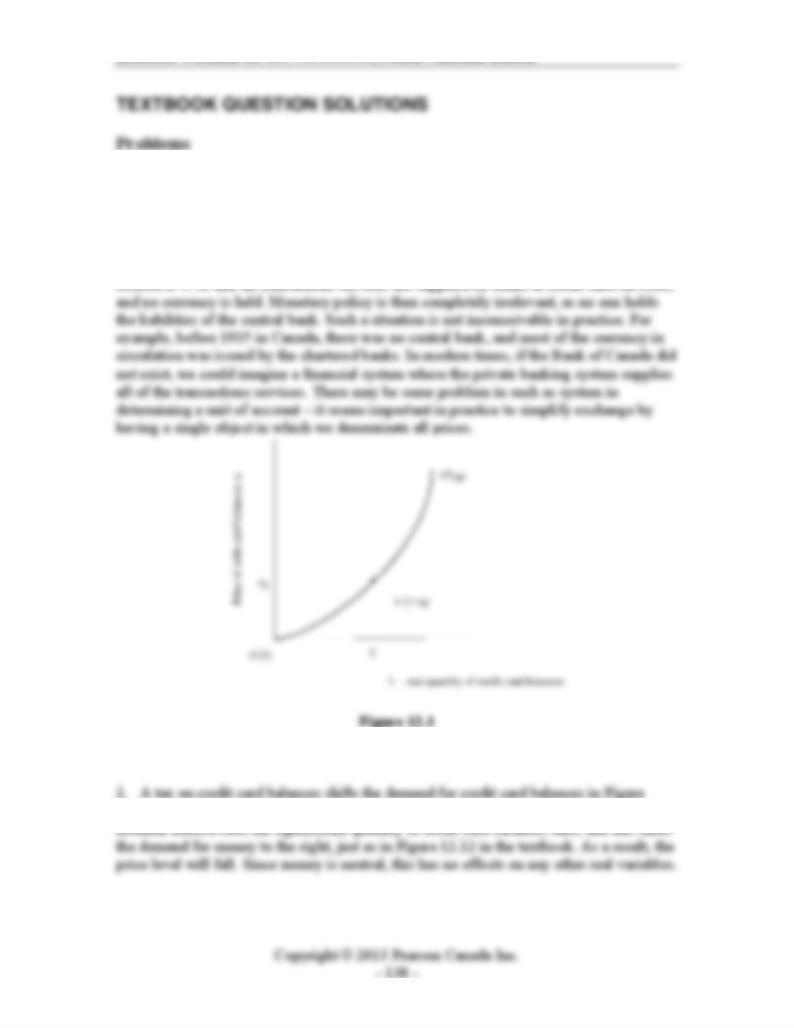
Instructor’s Manual for Macroeconomics, Fourth Canadian Edition
1. It is possible that at the market nominal interest rate, *( )
X
RY> , which would imply
a negative demand for money, which cannot happen in equilibrium. In other words, it is
possible that, if the market nominal interest rate is R, and q = R, that the banking system
would want to supply. Then, in Figure 12.1, there is some price of credit card services
1
qR<, such that, as in Figure 12.1, the equilibrium quantity of credit card services
12.2, so that demand is perfectly elastic at q = R – t rather than at q = R. Then, for each
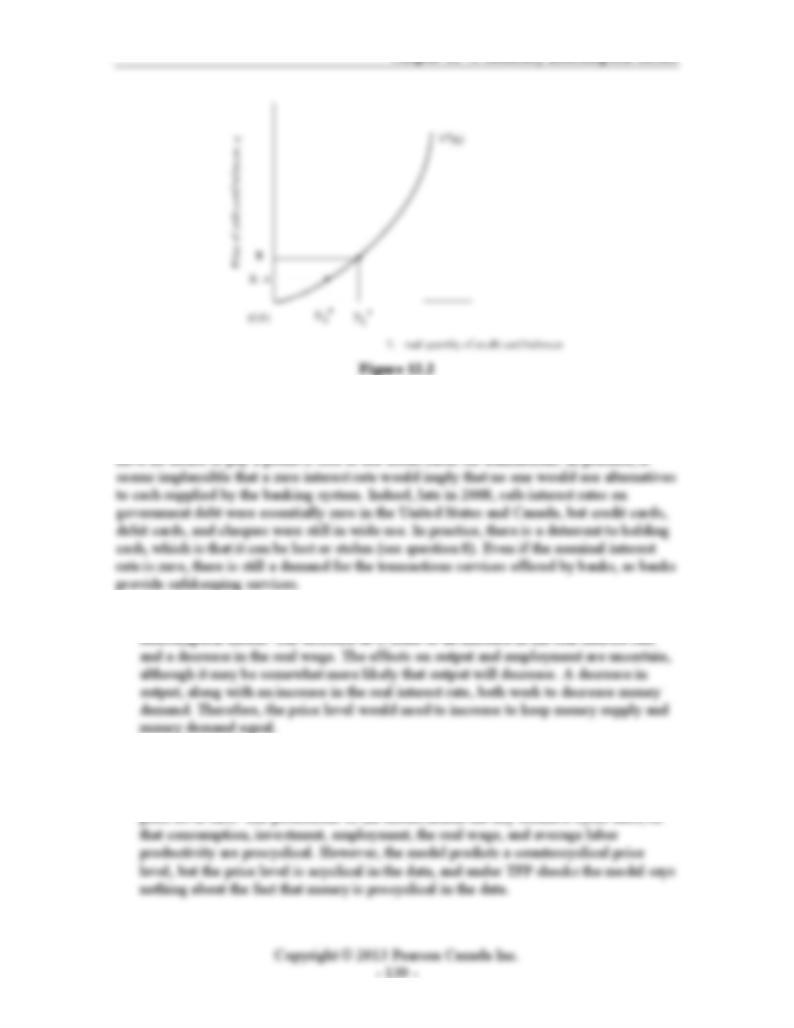
Chapter 12: A Monetary Intertemporal Model
3. If the nominal interest rate is zero, then the demand for credit card balances is zero.
The nominal interest rate represents the opportunity cost of holding currency for use in
transactions, and if this cost is reduced to zero then consumers and firms in the model
4. The real effects of a decrease in the capital stock are the same as those in the real
5. This represents an increase in current total factor productivity (TFP). The real effects
are exactly the same as in Chapter 11. But, since real output increases and the real
interest rate falls, there is an shift to the right in the money demand function, and the

Instructor’s Manual for Macroeconomics, Fourth Canadian Edition
7. This works like Figure 10.2 above for question 2, in reverse. Roughly, if there is some
chance that currency is stolen, then this increases the opportunity cost of holding
8. What will work in this case to totally eliminate the confusion for private sector
economic agents is the following. First, as long as the central bank does not see a
shock to total factor productivity, it should have an interest rate target. Then, if there
9. There are assumed to be no non-neutralities of money. For part (a), from question #5,
if there is an increase in total factor productivity, then the price level falls, and real
output rises, if the central bank does nothing. Nominal GDP may rise or fall.
Therefore, if the central bank is stabilizing nominal GDP, then it may want to